Thien Mu Pagoda Hue - explore the 400-year-old sacred pagoda
Where is Thien Mu Pagoda? Thien Mu Pagoda Hue is also known by another name as Linh Mu Pagoda, located on Ha Khue hill, in Kim Long ward, Hue city, Thua Thien Hue province. The pagoda is located on the north bank of the Perfume River, about 5km west of Hue city center. This place possesses charming scenery, becoming a must-see stop for tourists every time they visit the ancient capital.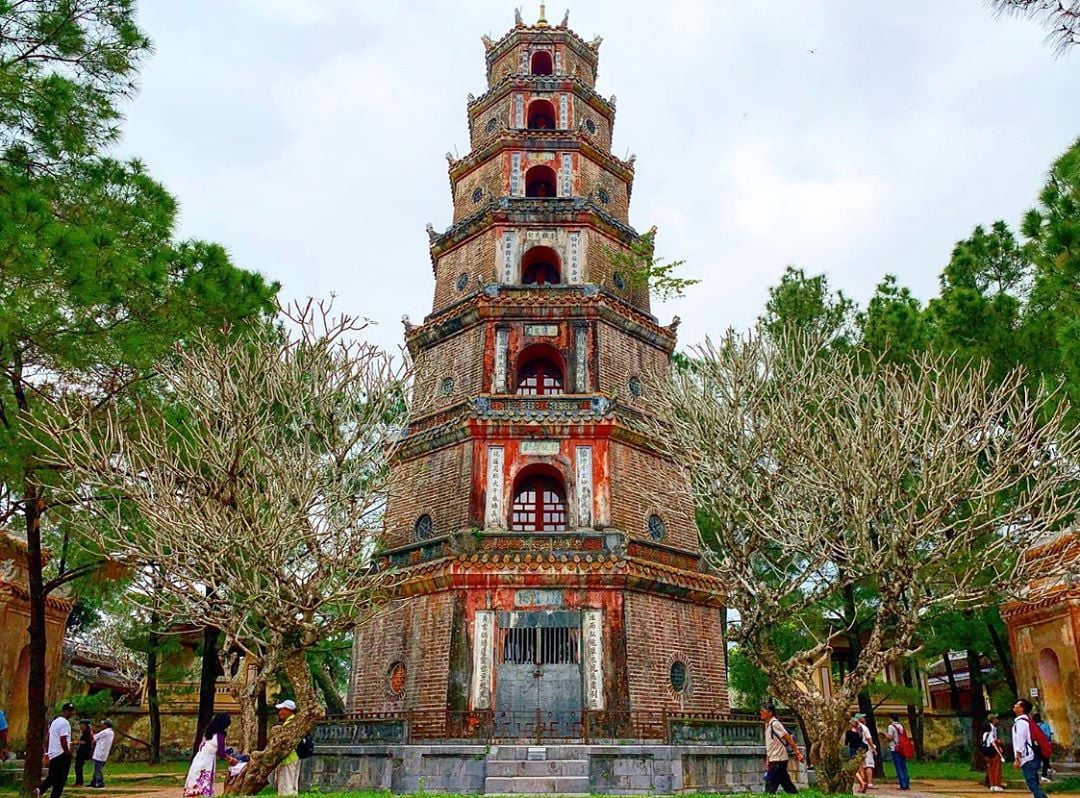 According to historical records, Lord Nguyen Hoang - the first Lord of Dang Trong was the one who built this pagoda. In 1601, to prepare for the process of expanding the territory and building a prosperous country, Lord Nguyen Hoang and his soldiers roamed on both sides of the Perfume River. He suddenly caught sight of a small hill rising next to the blue river, like a dragon turning its head to look back.
According to historical records, Lord Nguyen Hoang - the first Lord of Dang Trong was the one who built this pagoda. In 1601, to prepare for the process of expanding the territory and building a prosperous country, Lord Nguyen Hoang and his soldiers roamed on both sides of the Perfume River. He suddenly caught sight of a small hill rising next to the blue river, like a dragon turning its head to look back.
At the same time, people in the area spread the story about an old woman wearing a red shirt, with a kind face. Every night she went up Ha Khue hill and told everyone: Here there will be a true lord who will build a pagoda to guard the dragon veins. Seeing that his idea had similarities with the story, Nguyen Hoang immediately ordered his soldiers to build a temple on the hill. At this time, the pagoda was named "Thien Mu Tu" - meaning "Heaven's midwife". Over time, the pagoda has undergone many restorations. Among them, the most prominent is the restoration in 1710, during the reign of Lord Nguyen Phuc Chu. He completed and changed many architectural structures of Thien Mu Pagoda in Hue. In particular, a Dai Hong Chung weighing more than 2 tons was newly cast and placed right at Dai Hung Palace
Over time, the pagoda has undergone many restorations. Among them, the most prominent is the restoration in 1710, during the reign of Lord Nguyen Phuc Chu. He completed and changed many architectural structures of Thien Mu Pagoda in Hue. In particular, a Dai Hong Chung weighing more than 2 tons was newly cast and placed right at Dai Hung Palace
To this day, the pagoda still deserves the title "First Ancient Pagoda", not only a purely spiritual place but also a beautiful landscape._1624357166.jpg) Thien Mu Pagoda Hue is located on the banks of the romantic Perfume River, wearing a peaceful and tranquil beauty. From afar, visitors can see the ancient pagoda appearing with the shape of a giant turtle carrying the ancient tower on its back. The majestic pagoda reflects its reflection on the lyrical Perfume River. The space is tinged with poetry, full of poetry that cannot be found anywhere else. Coming here, visitors seem to step into a fairyland, feeling pure and peaceful.
Thien Mu Pagoda Hue is located on the banks of the romantic Perfume River, wearing a peaceful and tranquil beauty. From afar, visitors can see the ancient pagoda appearing with the shape of a giant turtle carrying the ancient tower on its back. The majestic pagoda reflects its reflection on the lyrical Perfume River. The space is tinged with poetry, full of poetry that cannot be found anywhere else. Coming here, visitors seem to step into a fairyland, feeling pure and peaceful.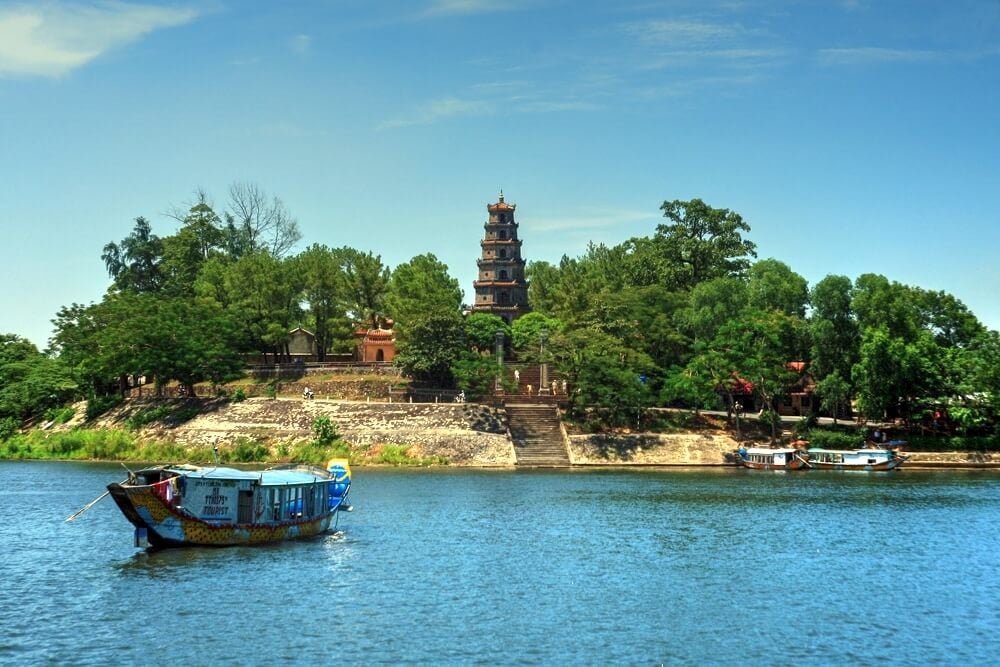
Thien Mu Pagoda Hue is covered with pine trees, ornamental plants and exquisite lotus ponds. The fragrant lotus scent spreads everywhere. Leaving behind all the noise and fatigue outside, here, visitors only hear the sound of slow footsteps, the gentle sound of falling leaves, sometimes a clear, humming, echoing bell, or the sound of wood. emanating from the gong in the main hall... all create a solemn yet calm Buddhist space. The poetic and peaceful scenery of this place makes visitors stop to admire the scenery and want to stay forever.
Located right in the main hall of Thien Mu Pagoda Hue, Dai Hung Palace is a place to worship Maitreya Buddha - the God who brings carefree joy. The statue depicts Maitreya Buddha with a gentle appearance, large, knowledgeable ears, a large belly filled with tolerance and a kind smile. The palace is built entirely of solid cement. The side is repainted in wood color, giving us a feeling of closeness and familiarity.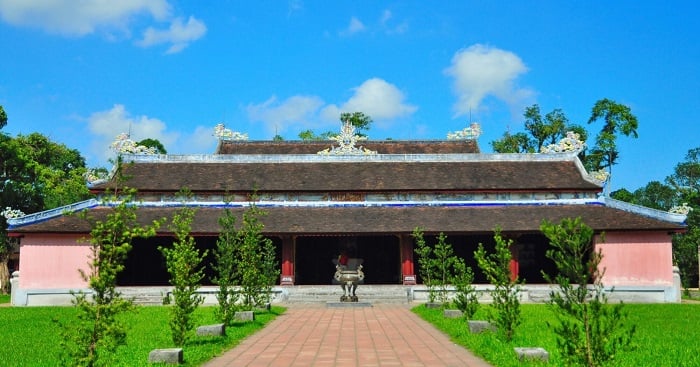 Not only displaying the Maitreya Buddha, Dai Hung Palace is also home to a great painting, dating from 1974, and an extremely delicate bronze moon-shaped bell. Going deep inside is the temple, in the center is the statue of Tam The Buddha, on the left is Van Phu Bodhisattva and on the right is Pho Hien. In particular, the land deep in Dai Hung Palace is the burial place of Dharma Master Thich Don Hau - Abbot of the pagoda.
Not only displaying the Maitreya Buddha, Dai Hung Palace is also home to a great painting, dating from 1974, and an extremely delicate bronze moon-shaped bell. Going deep inside is the temple, in the center is the statue of Tam The Buddha, on the left is Van Phu Bodhisattva and on the right is Pho Hien. In particular, the land deep in Dai Hung Palace is the burial place of Dharma Master Thich Don Hau - Abbot of the pagoda.
Phuoc Duyen Tower was built in 1844 by King Thieu Tri. At first, the name was Tu Nhan Thap. Then change it to the current name. At that time, to complete the tower, raw materials from clay, stone and Bat Trang ceramics had to be brought in from outside.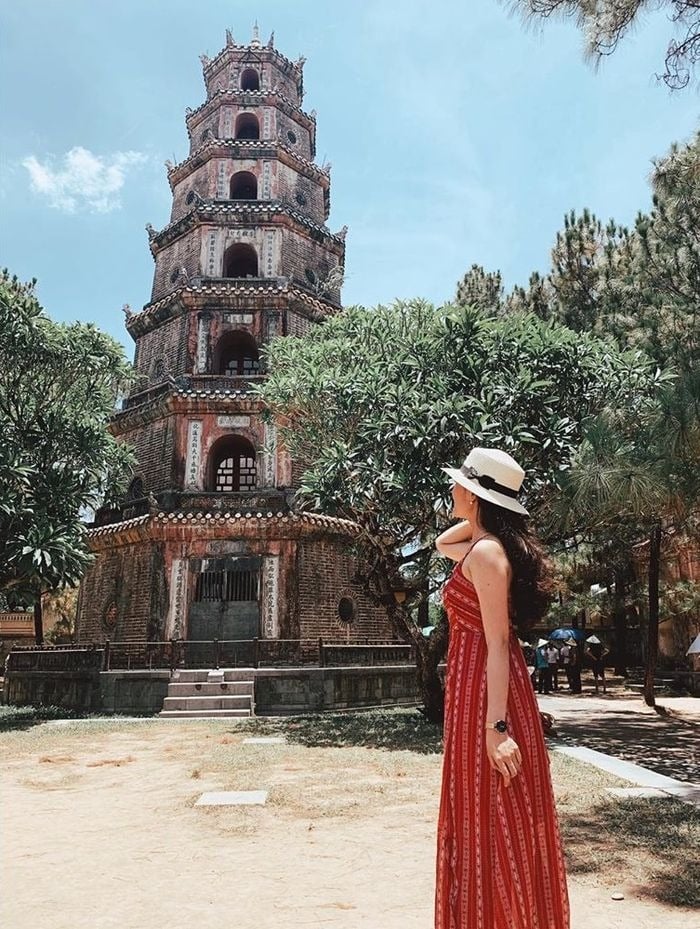 The body of the tower is built of rustic bricks, the curb part is built of solid stone. All combined to form an octagonal tower, the higher it gets, the smaller it gets, with a total of 7 floors, each 2m. In general, the design of each floor is completely the same, painted in pink. Over the years, it has carried the mark of "time", highlighting the unique value of the ancient capital's architecture
The body of the tower is built of rustic bricks, the curb part is built of solid stone. All combined to form an octagonal tower, the higher it gets, the smaller it gets, with a total of 7 floors, each 2m. In general, the design of each floor is completely the same, painted in pink. Over the years, it has carried the mark of "time", highlighting the unique value of the ancient capital's architecture
The tomb of the late Venerable Thich Don Hau Venerable Thich Don Hau is a famous abbot at Thien Mu Pagoda Hue. He devoted his whole life to the development of Vietnamese Buddhism. In addition, he is also respected by the people for his countless public activities, helping his people. When he passed away, the people and temple administrators buried the Venerable under the tower at the end of the campus to show gratitude to the revered monk.
Thich Don Hau is a famous abbot at Thien Mu Pagoda Hue. He devoted his whole life to the development of Vietnamese Buddhism. In addition, he is also respected by the people for his countless public activities, helping his people. When he passed away, the people and temple administrators buried the Venerable under the tower at the end of the campus to show gratitude to the revered monk.
Triple gate
This is the main entrance of the pagoda, located behind Phuoc Duyen tower. The gate has 3 paths, symbolizing the 3 worlds: Human - Demon - God. The gate is designed with 2 floors and 8 roofs. On the second floor of the middle gate there is a Buddha worship. 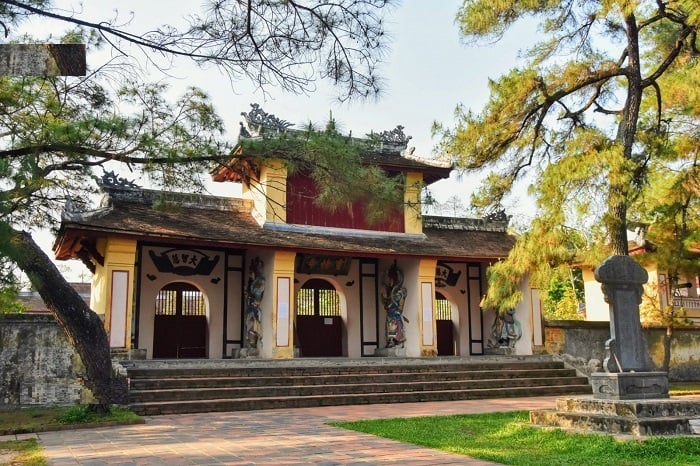
The top of the roof is carved with many extremely unique patterns. Both sides of the path are guarded by statues of Ho Phap.































